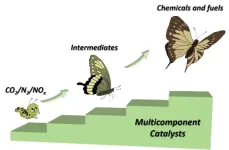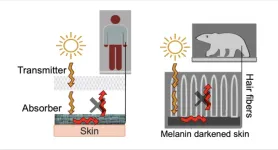Nearly 20 percent of today’s electricity in the United States comes from nuclear power. The U.S. has the largest nuclear fleet in the world, with 92 reactors scattered around the country. Many of these power plants have run for more than half a century and are approaching the end of their expected lifetimes.
Policymakers are debating whether to retire the aging reactors or reinforce their structures to continue producing nuclear energy, which many consider a low-carbon alternative to climate-warming coal, oil, and natural gas.
Now, MIT researchers say there’s another factor to consider in weighing the future of nuclear power: air quality. In addition to being a low carbon-emitting source, nuclear power is relatively clean in terms of the air pollution it generates. Without nuclear power, how would the pattern of air pollution shift, and who would feel its effects?
The MIT team took on these questions in a new study appearing in Nature Energy. They lay out a scenario in which every nuclear power plant in the country has shut down, and consider how other sources such as coal, natural gas, and renewable energy would fill the resulting energy needs throughout an entire year.
Their analysis reveals that indeed, air pollution would increase, as coal, gas, and oil sources ramp up to compensate for nuclear power’s absence. This in itself may not be surprising, but the team has put numbers to the prediction, estimating that the increase in air pollution would have serious health effects, resulting in an additional 5,200 pollution-related deaths over a single year.
If, however, more renewable energy sources become available to supply the energy grid, as they are expected to by the year 2030, air pollution would be curtailed, though not entirely. The team found that even under this heartier renewable scenario, there is still a slight increase in air pollution in some parts of the country, resulting in a total of 260 pollution-related deaths over one year.
When they looked at the populations directly affected by the increased pollution, they found that Black or African American communities — a disproportionate number of whom live near fossil-fuel plants — experienced the greatest exposure.
“This adds one more layer to the environmental health and social impacts equation when you’re thinking about nuclear shutdowns, where the conversation often focuses on local risks due to accidents and mining or long-term climate impacts,” says lead author Lyssa Freese, a graduate student in MIT’s Department of Earth, Atmospheric and Planetary Sciences (EAPS).
“In the debate over keeping nuclear power plants open, air quality has not been a focus of that discussion,” adds study author Noelle Selin, a professor in MIT’s Institute for Data, Systems, and Society (IDSS) and EAPS. “What we found was that air pollution from fossil fuel plants is so damaging, that anything that increases it, such as a nuclear shutdown, is going to have substantial impacts, and for some people more than others.”
The study’s MIT-affiliated co-authors also include Principal Research Scientist Sebastian Eastham and Guillaume Chossière SM ’17, PhD ’20, along with Alan Jenn of the University of California at Davis.
Future phase-outs
When nuclear power plants have closed in the past, fossil fuel use increased in response. In 1985, the closure of reactors in Tennessee Valley prompted a spike in coal use, while the 2012 shutdown of a plant in California led to an increase in natural gas. In Germany, where nuclear power has almost completely been phased out, coal-fired power increased initially to fill the gap.
Noting these trends, the MIT team wondered how the U.S. energy grid would respond if nuclear power were completely phased out.
“We wanted to think about what future changes were expected in the energy grid,” Freese says. “We knew that coal use was declining, and there was a lot of work already looking at the impact of what that would have on air quality. But no one had looked at air quality and nuclear power, which we also noticed was on the decline.”
In the new study, the team used an energy grid dispatch model developed by Jenn to assess how the U.S. energy system would respond to a shutdown of nuclear power. The model simulates the production of every power plant in the country and runs continuously to estimate, hour by hour, the energy demands in 64 regions across the country.
Much like the way the actual energy market operates, the model chooses to turn a plant’s production up or down based on cost: Plants producing the cheapest energy at any given time are given priority to supply the grid over more costly energy sources.
The team fed the model available data on each plant’s changing emissions and energy costs throughout an entire year. They then ran the model under different scenarios, including: an energy grid with no nuclear power, a baseline grid similar to today’s that includes nuclear power, and a grid with no nuclear power that also incorporates the additional renewable sources that are expected to be added by 2030.
They combined each simulation with an atmospheric chemistry model to simulate how each plant’s various emissions travel around the country and to overlay these tracks onto maps of population density. For populations in the path of pollution, they calculated the risk of premature death based on their degree of exposure.
System response
Their analysis showed a clear pattern: Without nuclear power, air pollution worsened in general, mainly affecting regions in the East Coast, where nuclear power plants are mostly concentrated. Without those plants, the team observed an uptick in production from coal and gas plants, resulting in 5,200 pollution-related deaths across the country, compared to the baseline scenario.
They also calculated that more people are also likely to die prematurely due to climate impacts from the increase in carbon dioxide emissions, as the grid compensates for nuclear power’s absence. The climate-related effects from this additional influx of carbon dioxide could lead to 160,000 additional deaths over the next century.
“We need to be thoughtful about how we’re retiring nuclear power plants if we are trying to think about them as part of an energy system,” Freese says. “Shutting down something that doesn’t have direct emissions itself can still lead to increases in emissions, because the grid system will respond.”
“This might mean that we need to deploy even more renewables, in order to fill the hole left by nuclear, which is essentially a zero-emissions energy source,” Selin adds. “Otherwise we will have a reduction in air quality that we weren’t necessarily counting on.”
This study was supported, in part, by the U.S. Environmental Protection Agency.
###
Written by Jennifer Chu, MIT News Office
END





